Thujaplicin
Thujaplicins (isopropyl cycloheptatrienolones) are series of related chemical substances discovered in the 1930s and isolated from Thuja plicata (western redcedar tree).[1] The three compounds are α-thujaplicin, β-thujaplicin (hinokitiol), and γ-thujaplicin. They are known for potent anti-fungal and anti-bacterial properties.[2] They are also known to be potent antioxidants.[3] They were the first natural tropolones to be made synthetically, by Ralph Raphael and colleagues.[4]
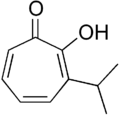
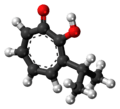
Chemical structure of α-thujaplicin

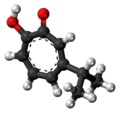
Chemical structure of hinokitiol (β-thujaplicin)
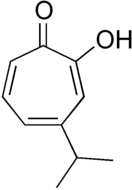
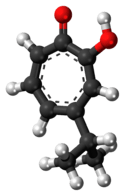
Chemical structure of γ-thujaplicin
References
- Erdtman, H.; Gripenberg, J. (1948). "Antibiotic substances from the heart wood of Thuja plicata Don". Nature. 161 (4097): 719. doi:10.1038/161719a0.
- Chedgy, R. J.; Lim, Y. W.; Breuil, C. (2009). "Effects of leaching on fungal growth and decay of Western red cedar (Thuja plicata)". Canadian Journal of Microbiology. 55 (5): 578–586. doi:10.1139/W08-161. PMID 19483786.
- Chedgy, R. (2010). Secondary Metabolites of Western Red Cedar (Thuja plicata). Lambert Academic Publishing. ISBN 978-3-8383-4661-8.
- Cook, J.W.; Scott, A.I.; Raphael, R.A. (1951). "Tropolones. Part II. The synthesis of α-, β-, and γ-thujaplicins". J. Chem. Soc.: 695–698. doi:10.1039/JR9510000695.
This article is issued from Wikipedia. The text is licensed under Creative Commons - Attribution - Sharealike. Additional terms may apply for the media files.